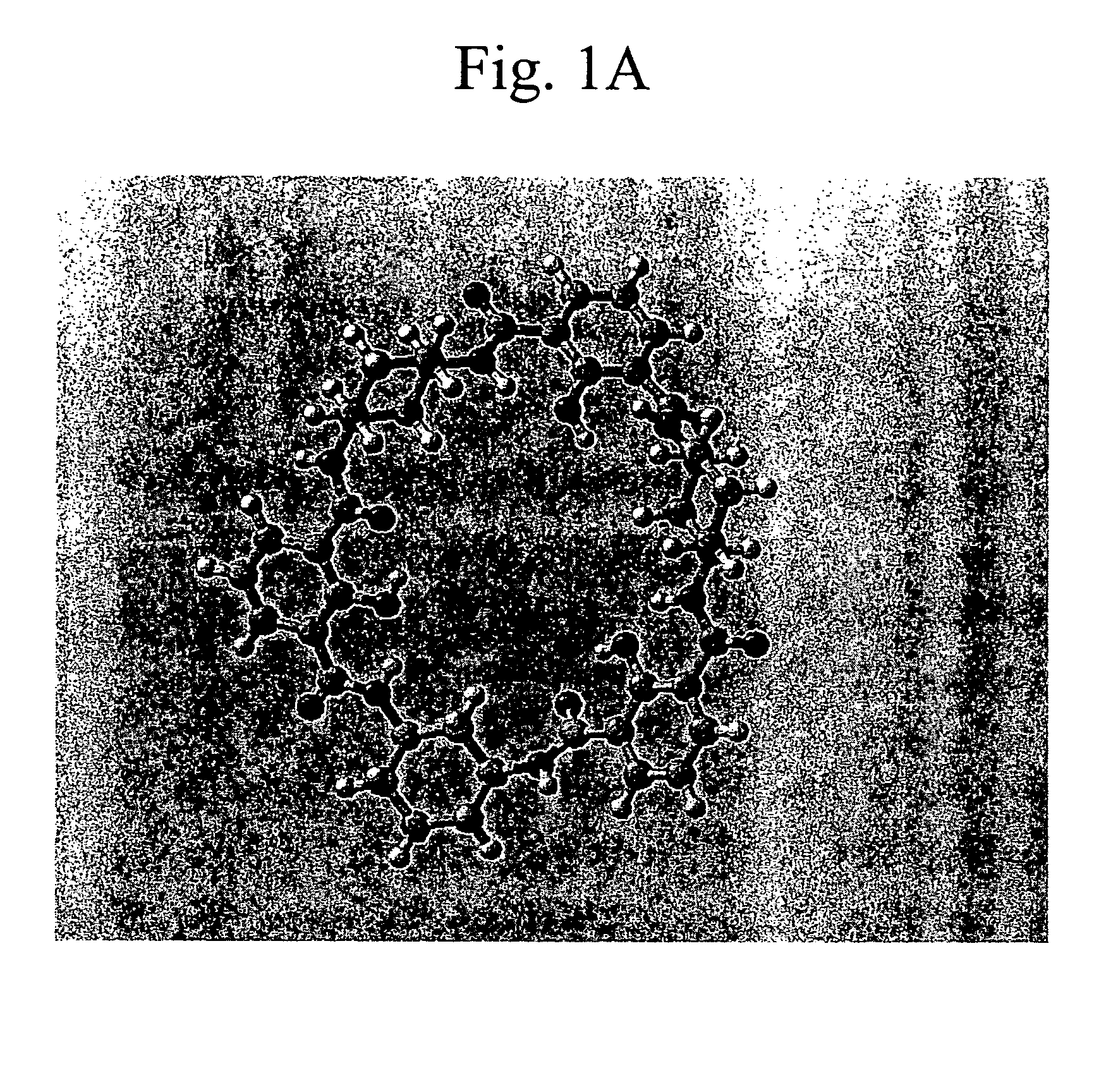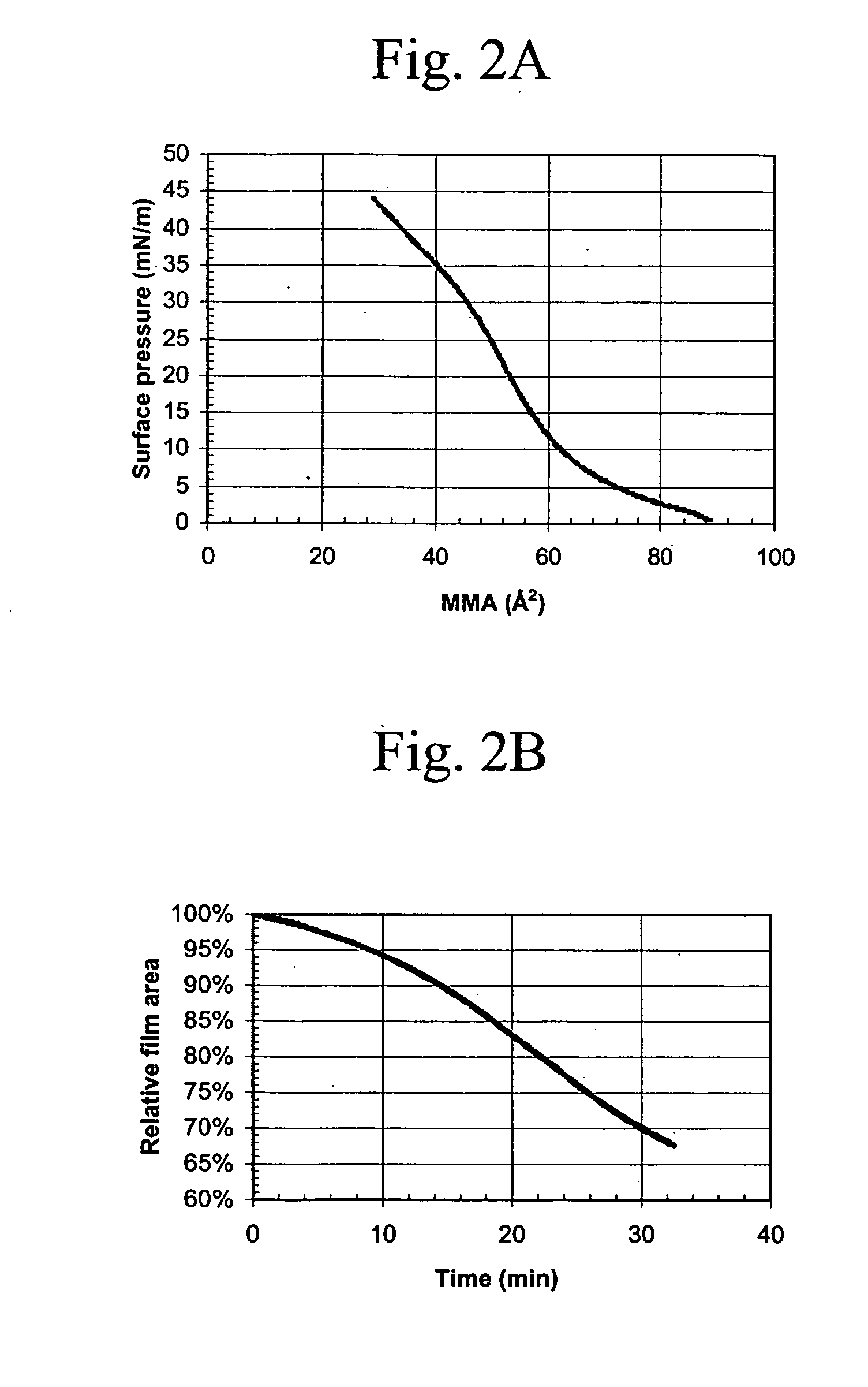Macrocyclic module compositions
- Summary
- Abstract
- Description
- Claims
- Application Information
AI Technical Summary
Benefits of technology
Problems solved by technology
Method used
Image
Examples
example 1
2,6-Diformyl-4-bromophenol
[0101] Hexamethylenetetramine (73.84 g, 526 mmol) was added to TFA (240 mL) with stirring. 4-Bromophenol (22.74 g, 131 mmol) was added in one portion and the solution heated in an oil bath to 120° C. and stirred under argon for 48 h. The reaction mixture was then cooled to ambient temperature. Water (160 mL) and 50% aqueous H2SO4 (80 mL) were added and the solution stirred for an additional 2 h. The reaction mixture was poured into water (1600 mL) and the resulting precipitate collected on a Buichner funnel. The precipitate was dissolved in ethyl acetate (EtOAc) and the solution was dried over MgSO4. The solution was filtered and the solvent removed on a rotary evaporator. Purification by column chromatography on silica gel (400 g) using a gradient of 15-40% ethyl acetate in hexanes resulted in a isolation of the product as a yellow solid (18.0 g, 60%). 1H NMR (400 MHz, CDCl3) δ 11.54 (s, 1 H, OH), 10.19 (s, 2 H, CHO), 8.08 (s, 2 H, ArH).
example 2
2,6-Diformyl-4-(dodecyn-1-yl)phenol
[0102] 2,6-Diformyl-4-bromophenol (2.50 g, 10.9 mmol), 1 -dodecyne (2.00 g, 12.0 mmol), CuI (65 mg, 0.33 mmol), and bis(triphenylphosphine)palladium)II) dichloride were suspended in degassed acetonitrile (MeCN) (5 mL) and degassed benzene (1 mL). The yellow suspension was sparged with argon for 30 min and degassed Et3N (1 mL) was added. The resulting brown suspension was sealed in a pressure vial, warmed to 80° C. and held there for 12 h. The mixture was then partitioned between EtOAc and KHSO4 solution. The organic layer was separated, washed with brine, dried (MgSO4) and concentrated under reduced pressure. The dark yellow oil was purified by column chromatography on silica gel (25% Et2O in hexanes) to give 1.56 g (46%) of the title compound.
[0103]1H NMR (400 MHz, CDCl3) δ11.64 (s, 1 H, OH), 10.19 (s, 2 H, CHO), 7.97 (s, 2 H, ArH), 2.39 (t, 2 H, J=7.2 Hz, propargylic), 1.59 (m, 3 H, aliphatic), 1.43, (m, 2 H, aliphatic), 1.28 (m, 11 H, aliphat...
example 3
2,6-Diformyl-4-(dodecen-1-yl)phenol
[0106] 2,6-Diformyl-4-bromophenol (1.00 g, 4.37 mmol), 1-dodecene (4.8 mL, 21.7 mmol), 1.40 g tetrabutylammonium bromide (4.34 mmol), 0.50 g NaHCO3 (5.95 mmol), 1.00 g LiCl (23.6 mmol) and 0.100 g palladium diacetate (Pd(OAc)2) (0.45 mmol) were combined in 30 mL degassed anhydrous dimethylformamide (DMF). The mixture was sparged with argon for 10 min and then sealed in a pressure vial which was warmed to 82° C. and held for 40 h. The crude reaction mixture was partitioned between CH2Cl2 and 0.1 M HCl solution. The organic layer was washed with 0.1 M HCl (2×), brine (2×), and saturated aqueous NaHCO3 (2×), dried over MgSO4 and concentrated under reduced pressure. The dark yellow oil was purified by column chromatography on silica gel (25% hexanes in Et2O) to give 0.700 g (51%) of the title compound as primarily the Z isomer.
[0107]1H NMR (400 MHz, CDCl3) δ11.50 (s, 1 H, OH), 10.21 (s, 2 H, CHO), 7.95 (s, 2 H, ArH), 6.38 (d, 1 H, vinyl), 6.25 (m, 1 ...
PUM
| Property | Measurement | Unit |
|---|---|---|
| Fraction | aaaaa | aaaaa |
| Electric charge | aaaaa | aaaaa |
| Surface energy | aaaaa | aaaaa |
Abstract
Description
Claims
Application Information
 Login to View More
Login to View More - R&D
- Intellectual Property
- Life Sciences
- Materials
- Tech Scout
- Unparalleled Data Quality
- Higher Quality Content
- 60% Fewer Hallucinations
Browse by: Latest US Patents, China's latest patents, Technical Efficacy Thesaurus, Application Domain, Technology Topic, Popular Technical Reports.
© 2025 PatSnap. All rights reserved.Legal|Privacy policy|Modern Slavery Act Transparency Statement|Sitemap|About US| Contact US: help@patsnap.com



